How is the silent switch impacting your content?
As a PR adviser since 2005 and a digital strategist since 2007, I’ve seen the silent switch take over — one seamless iteration after another.
In this blog article, I explain how social media algorithms silently have metastasised into a series of global Pavlovian experiments.
Here we go:
The Silent Switch
All social media algorithms are built differently and are constantly being developed. At the same time, social media users’ behaviours are evolving.
Still, there was a way that social media algorithms used to behave—and there is a way that social media algorithms behave now.
This has been a fundamental but silent switch.
How Social Media Algorithms Used To Behave
For more than a decade, social media algorithms would deliver organic reach according to a distribution that looked something like this:
This distribution of organic reach enabled organisations to use social media despite not being “media companies.”
How Social Media Algorithms Behave Today
Today, after the silent shift, social media algorithms deliver organic reach more like this:
The increased competition and sophistication among content creators partially explain this new type of distribution. However, going viral is still just as possible for anyone.
How does this work?
The Single Content Algorithm
How can a social network predict what users will like?
Content from a trusted creator trusted by a large community of followers used to be the leading indicator of future performance. But today, social networks have found a better way to predict content success.
The single content algorithm = when social networks demote content creator authority to promote single content performance to maximise user engagement for ad revenue.
The single content algorithm presents newly published content to a limited audience sample size:
If the newly published content tests successfully, the social media algorithm pushes that content to a slightly larger statistical subset. And so on.
This iterative process means that single pieces of content worthy of going viral will go viral, a) even if it takes a longer time, and b) regardless of the content creator’s number of followers.
Learn more: The Silent Switch
Why Subscriber Counts Matter Less
Like many others interested in photography, I subscribe to Canadian content creator and photographer Peter McKinnon on YouTube. And I’m not alone; 5,55 million subscribers follow McKinnon as I write this.
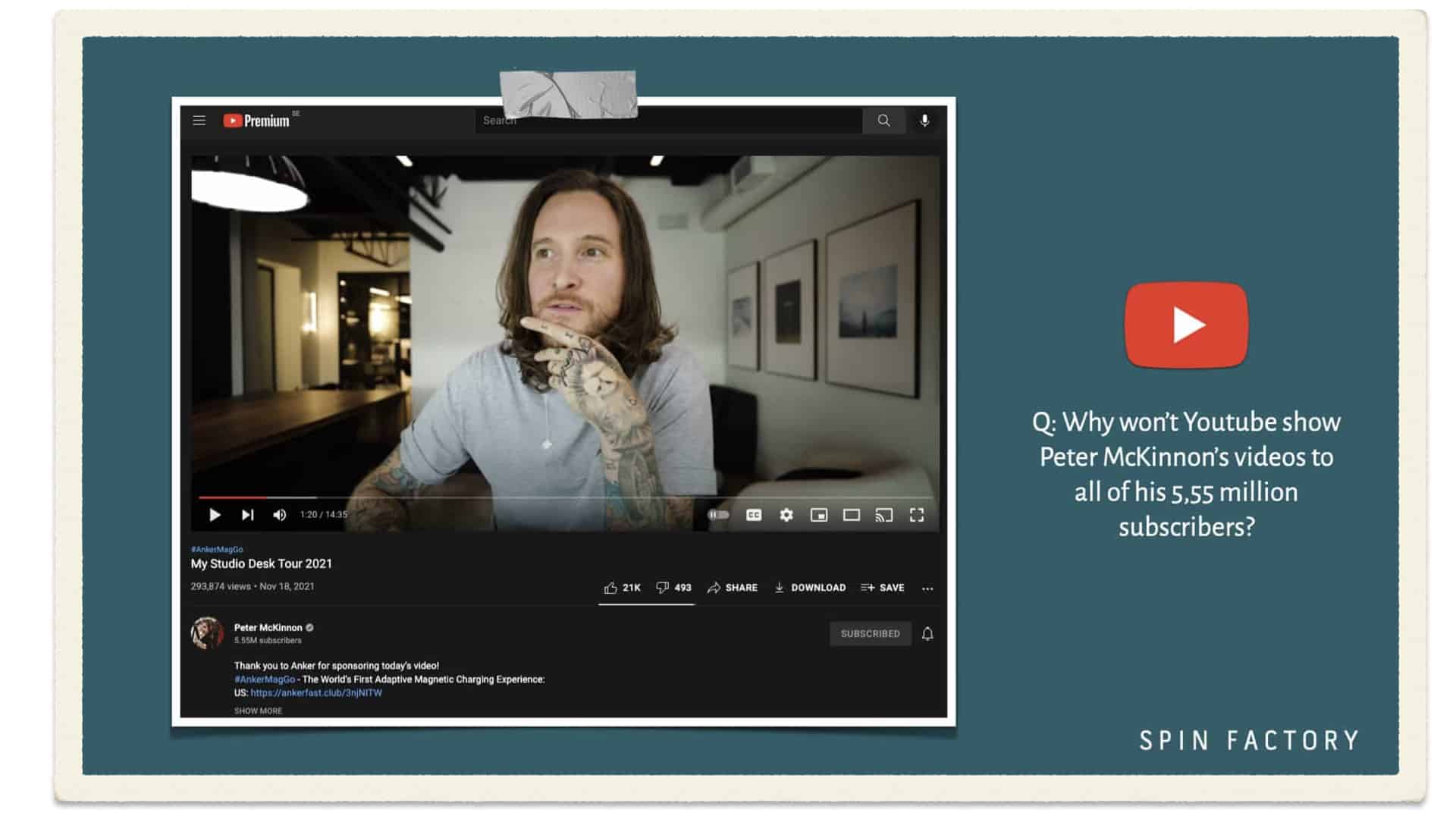
5,55 million is a respectable audience by any measure!
Still, it’s not uncommon for McKinnon’s regular videos to acquire a few hundred thousand views. Don’t get me wrong: I’m not saying a) that a few hundred thousand views are nothing or b) that we should feel sorry for influencers.
I’m saying: A few hundred thousand views is a lot—but it’s not 5,55 million.
Instead of basing algorithmic distribution on McKinnon’s past performance (e.g., subscriber count, total views earned, etc.), YouTube tests each new video using the single content algorithm.
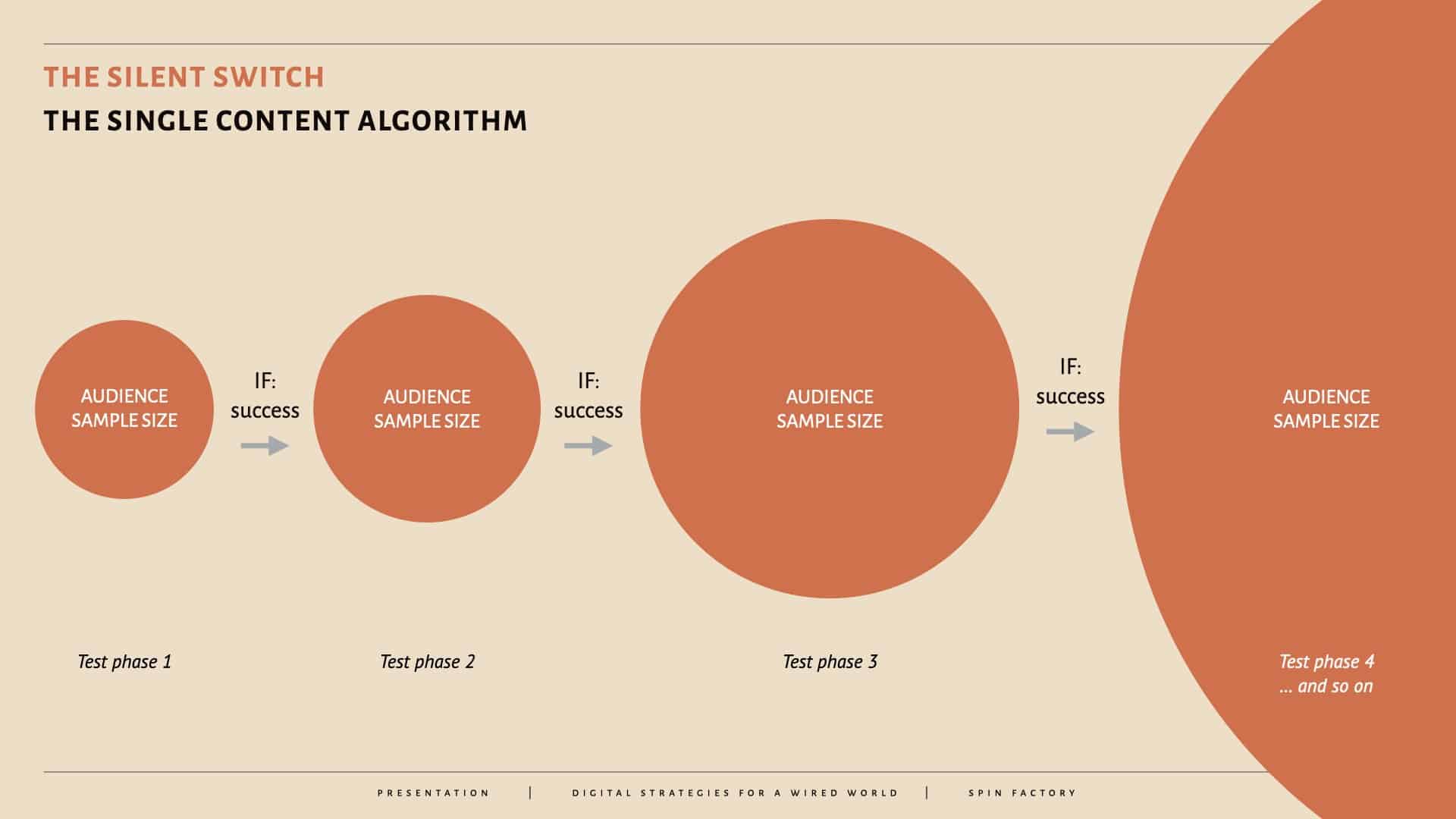
If McKinnon almost always gets a few hundred thousand views, his videos typically pass that many iterative audience tests before hitting the “algorithmic wall of bricks” (i.e. IF=failure).
It’s the silent switch.
Now, I appreciate McKinnon’s content. However, his struggle to earn more views is… his.
In the grander scheme of things, at the level where it affects us all as online media consumers, the single content algorithm has one profound — and rather serious! — implication:
Earning trust over time gets the algorithmic backseat, while sensational pieces of content get the royal treatment.
Learn more: Why Subscriber Counts Matter Less
Why Social Media Algorithms Are Basic
Earning many subscribers, fans, and followers used to matter a lot, but since the silent switch, it has mattered less. The old trust-based system has given way to the single content algorithm, which favours sensationalism.
But, wait!
Why must it be this way? With such profound advancements in digital technologies (artificial intelligence, machine learning, big data analysis, etc.), shouldn’t social media algorithms be more sophisticated?
In an era of prominent social media issues (fake news, disinformation, electoral tampering, etc.), shouldn’t social networks like Facebook, Instagram, TikTok, LinkedIn, and many others be more interested in favouring trust?
Instead, social media algorithms are basic. There are a few reasons as to why:
So, social media algorithms aren’t as sophisticated as they could be. They’re basic. For now, the single content algorithm reigns supreme.
The single content algorithm = when social networks demote content creator authority to promote single content performance to maximise user engagement for ad revenue.
Learn more: Why Social Media Algorithms Are Basic
List of Social Media Issues
Social media isn’t just nyan cats and double rainbows.
With massive change come new social media issues we must deal with.
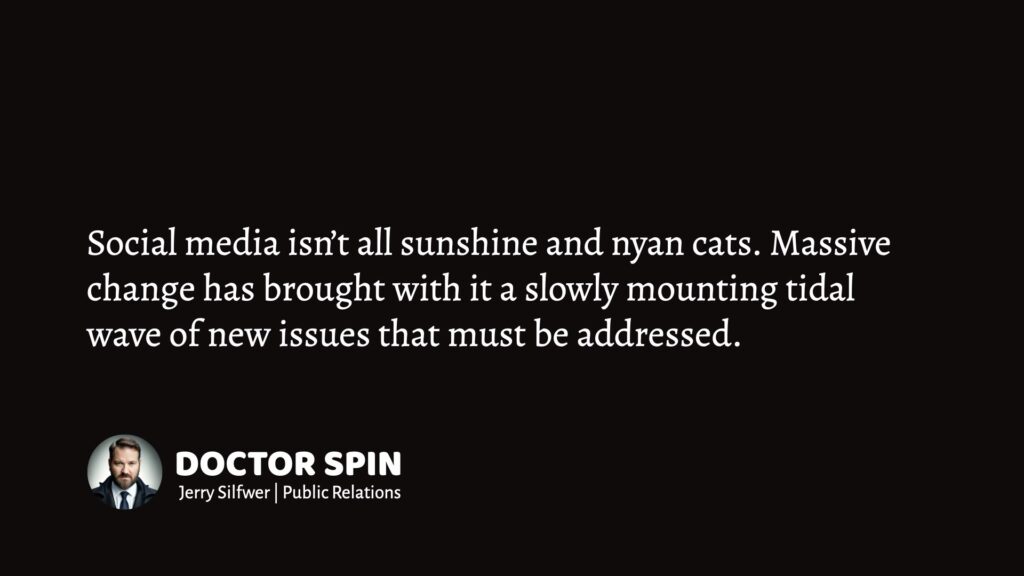
Here are a few examples of social media issues:
Read also: The List of Social Media Issues
Internet: The Global Pavlovian Experiment
Many people are deeply concerned with how the social media algorithms work. They seem to promote polarisation, fake news, disinformation, filter bubbles, etc.
The provocation is apparent:
“Social media algorithms are giving us, the people of the world, only what our behaviours tell them we want. We’ve evolved to care more about sensationalism over substance.”
Social media algorithms are slaves under the principles of classic media logic—and act as amplifiers of social media logic.
But if human beings are prone to sensationalised content, why does it seem like social media algorithms are making matters worse?
The answer is simple: It’s a self-reinforcing conditioning loop.
Pavlovian Conditioning
In classical conditioning, psychologist Ivan Pavlov made dogs salivate by hearing the sound of a triangle. Every time he fed the dogs, he played the sound. Soon, he could play the sound to elicit the dogs’ physical response (salivation) — without the food. 1Classical conditioning. (2023, January 17). In Wikipedia. https://en.wikipedia.org/wiki/Classical_conditioning
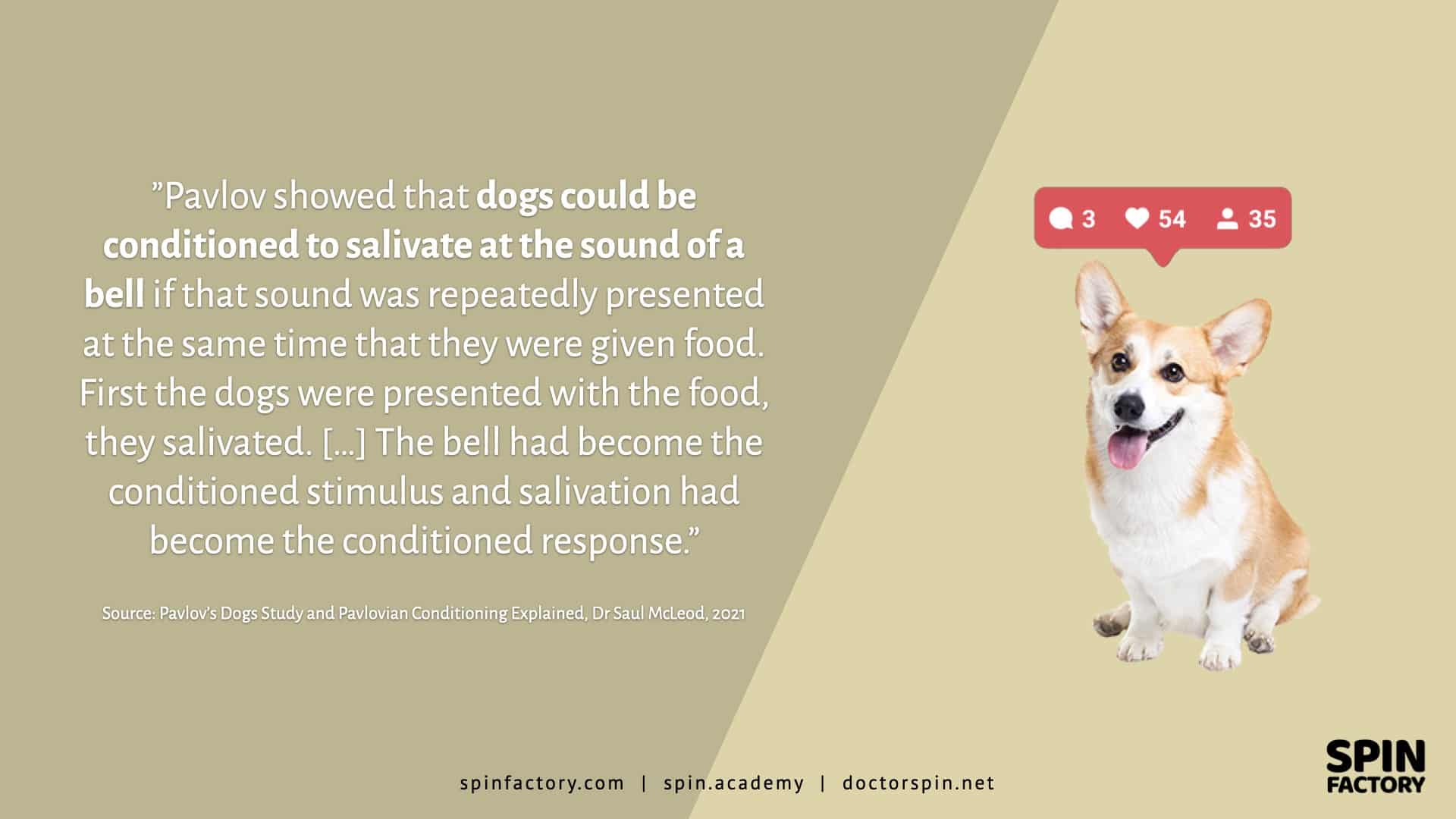
In operant conditioning (also called instrumental conditioning), the strength of an existing behaviour is modified by reinforcement or punishment. 2Operant conditioning. (2023, January 13). In Wikipedia. https://en.wikipedia.org/wiki/Operant_conditioning
Both methods modify behaviour by conditioning, and the distinction between these two approaches isn’t clear-cut. While salivation can be seen as a “reflex,” wanting treats despite not being hungry has elements of being a voluntary behaviour. And modifying behaviour to seek reinforcement actively or escape punishment can be more or less unconscious.
Tech giants like Meta, Alphabet, and TikTok have asked us to allow them to conduct Pavlovian experiments globally, and we have granted them that permission.
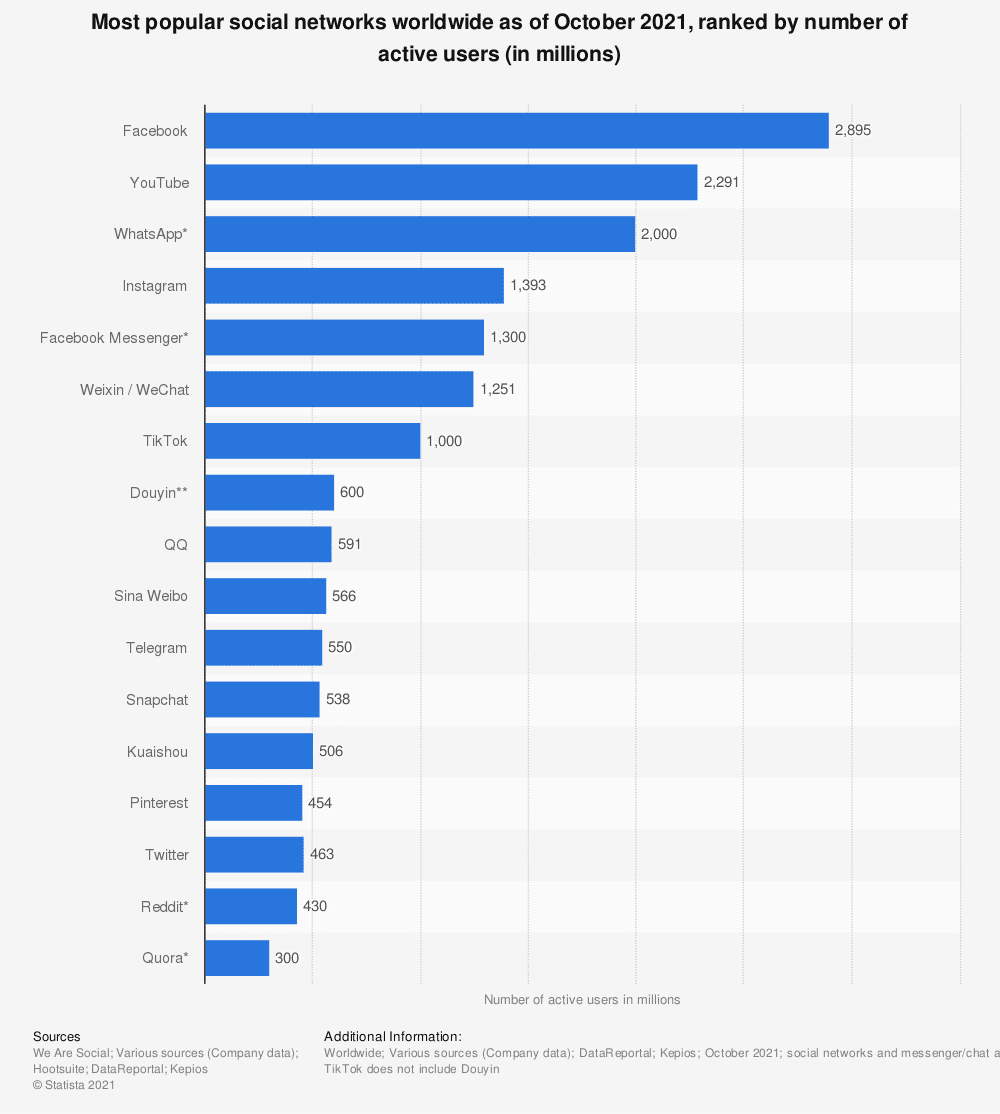
It’s no coincidence that their terms of service agreements are lengthy and hard-to-read disclaimers designed for scrolling past. At the same time, their algorithms promote content that can only be described as dopamine-inducing clickbaits.
And as a result, we’re flooded by a vast array of hard-to-tackle social media issues. The phenomenon is not novel. Neil Postman warned us that we might amuse ourselves to death in 1985!
It’s a Pavlovian loop: Human behaviours amplify social media algorithms, and social media algorithms amplify human behaviours.
Love it, hate it. If you’re a PR professional, it doesn’t matter.
If the playbook is changing, so must we.
Learn more: Internet: The Global Pavlovian Experiment (to be published)
Enter: Social Media Logic
Media logic is a set of theories describing how the medium affects the media. Typically, the format (as the medium dictates) influences the mediated message.
“Media logic is defined as a form of communication, and the process through which media transmit and communicate information. The logic and guidelines become taken for granted, often institutionalized, and inform social interaction. A basic principle is that media, information technologies, and communication formats can affect events and social activities.“
Source: The International Encyclopedia of Political Communication 3Altheide, D. L. (2016). Media Logic. The International Encyclopedia of Political Communication, 1 – 6. https://doi.org/10.1002/9781118541555.wbiepc088
As famously stipulated by Marshall McLuhan, “The medium is the message.” What are the typical effects of media logic on mediated messages?
Classic Media Logic Effects
Classic media logic is hypothesised to influence the news media in the following ways: 4Nord, L., & Strömbäck, J. (2002, January). Tio dagar som skakade världen. En studie av mediernas beskrivningar av terrorattackerna mot USA och kriget i Afghanistan hösten 2001. … Continue reading
The effects of the above media logic can also be recognised in social media. Still, social network algorithms seem to add even more effects:
Social Media Logic Effects
“Social media logic, rooted in programmability, popularity, connectivity, and datafication, is increasingly entangled with mass media logic, impacting various areas of public life.”
Source: Writing Technologies eJournal 5Dijck, J., & Poell, T. (2013). Understanding Social Media Logic. Writing Technologies eJournal. https://doi.org/10.17645/MAC.V1I1.70
Based on the suggested additions for social platforms, we can add four extra dimensions to the classic media logic effects model:
Social media logic seems entangled with classic media logic. While more complex, social networks seem to amplify the effects of classic media logic.
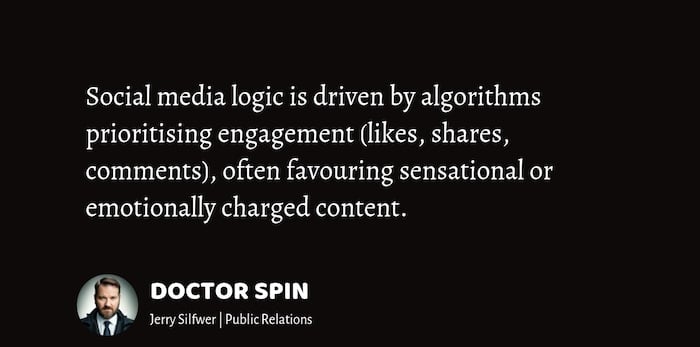
Learn more: Social Media Logic
Those Who Crush the Algorithm
Content that attracts instantaneous momentum and makes a big splash throughout each iterative testing series will outperform other content types.
As for YouTube, this is perhaps most clearly demonstrated by the record-breaking MrBeast:
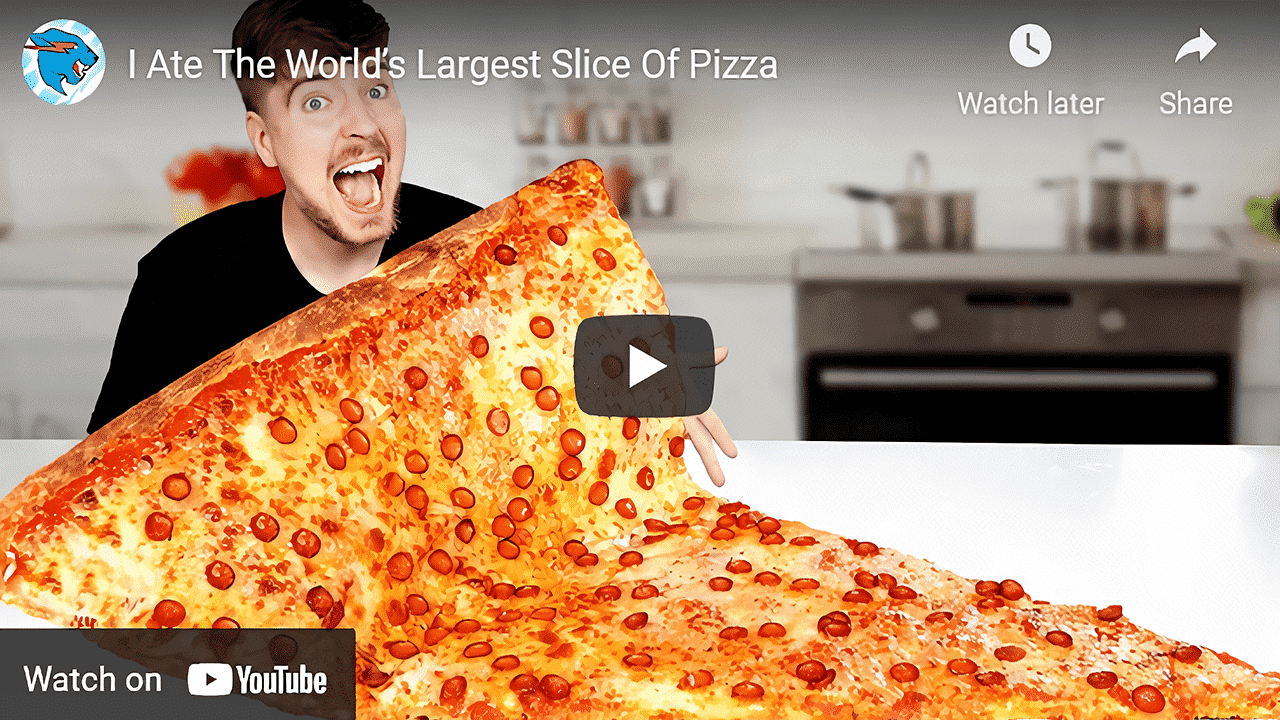
The fact that MrBeast has millions of followers on YouTube is not fundamental for his continuous success — his extravagant, over-the-top videos would go viral regardless of which account posted them. 6 I’ve conducted several in-depth interviews with MrBeast, and it’s clear that he’s a brilliant content creator who published videos on YouTube for a long time before his public breakthrough.
Here’s the point: Algorithmic distribution doesn’t mean content creators can’t reach a vast audience. Innovative creators, like MrBeast, will find ways to negotiate the algorithms and go viral repeatedly.
While we can appreciate MrBeast’s videos as pure dopamine-infused entertainment for the masses, we might be missing out on content created by individuals and organisations that could’ve reached their already-earned subscribers, fans, and followers.
Social Media Must Be Managed
Today’s ongoing amplification of sensationalism, i.e. the silent switch, has profound implications for the public relations function:
Many organisations have spent serious resources building trust and attracting subscribers, fans, and followers on social media. But the value of having subscribers, fans, and followers is quickly eroding.
As PR professionals, we must be rational.
We could compare the situation to our long-standing relationship with traditional news media. Traditional news media is powerful but imperfect, so PR professionals must manage it. The same goes for social media.
It’s not our place as professional communicators to tell journalists how to do their jobs, just as it isn’t our place to tell social networks or content creators how to do theirs.
If anything, we should be more serious about the importance of social media management.
Because social media must be managed.
As PR professionals, our job is to help organisations communicate efficiently during these times of constant change.
Today, social media management is critical for organisations aiming to engage effectively with their publics, manage their brand, and navigate the complex landscape of online communication. This involves various activities, from content creation to strategic communication and reputation management.
Learn more: Social Media Must Be Managed

THANKS FOR READING.
Need PR help? Hire me here.

What should you study next?
Spin Academy | Online PR Courses
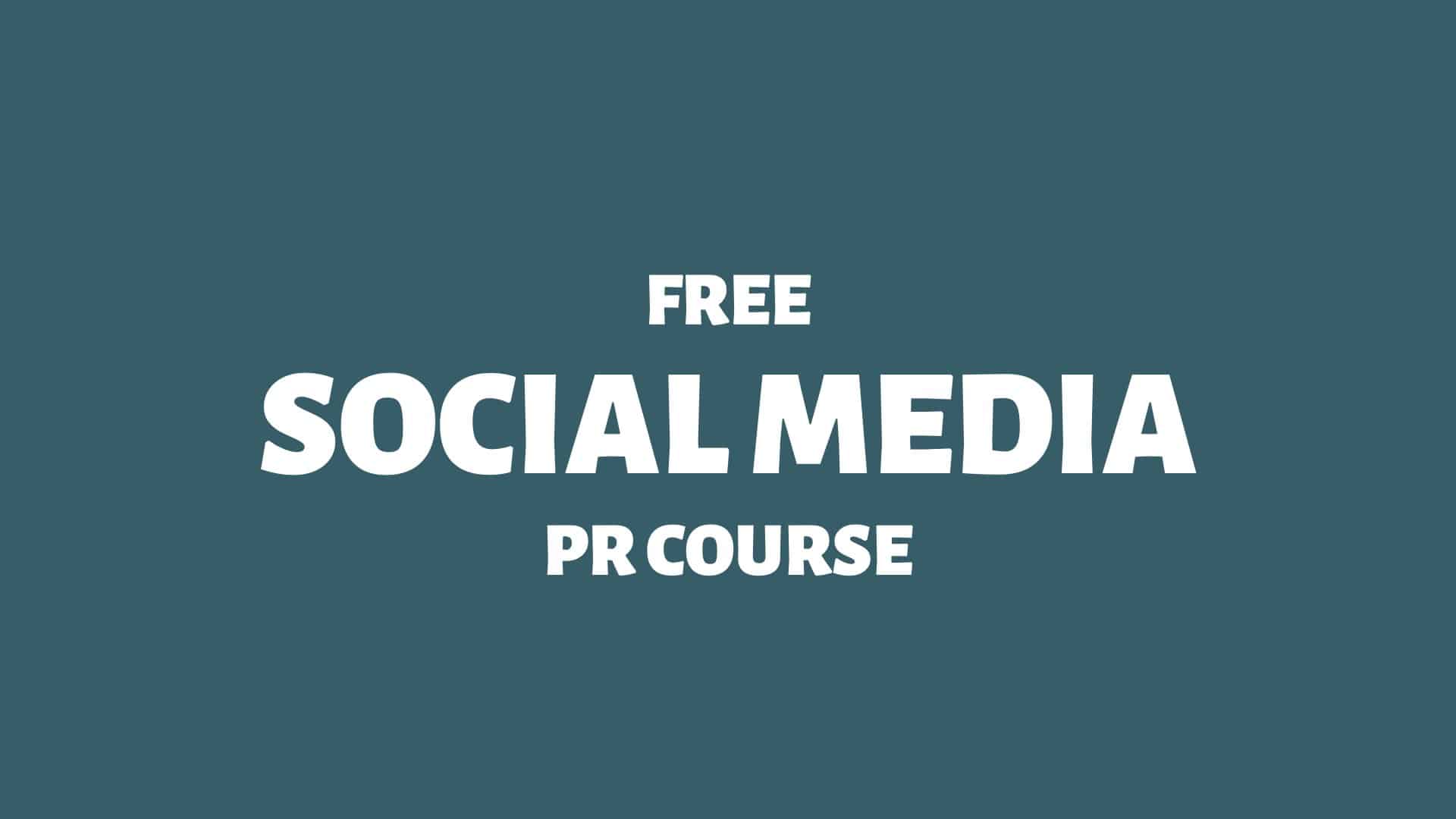
Spin’s PR School: Free Social Media PR Course
Discover this free Social Media PR Course and master the art of digital public relations on social networks and platforms. Explore now for valuable insights!
Social Media Psychology
Social Media Management
Social Media Issues
Learn more: All Free PR Courses
💡 Subscribe and get a free ebook on how to get better PR.

Annotations
| 1 | Classical conditioning. (2023, January 17). In Wikipedia. https://en.wikipedia.org/wiki/Classical_conditioning |
|---|---|
| 2 | Operant conditioning. (2023, January 13). In Wikipedia. https://en.wikipedia.org/wiki/Operant_conditioning |
| 3 | Altheide, D. L. (2016). Media Logic. The International Encyclopedia of Political Communication, 1 – 6. https://doi.org/10.1002/9781118541555.wbiepc088 |
| 4 | Nord, L., & Strömbäck, J. (2002, January). Tio dagar som skakade världen. En studie av mediernas beskrivningar av terrorattackerna mot USA och kriget i Afghanistan hösten 2001. ResearchGate; Styrelsen för psykologiskt försvar. https://www.researchgate.net/publication/271014624_Tio_dagar_som_skakade_varlden_En_studie_av_mediernas_beskrivningar_av_terrorattackerna_mot_USA_och_kriget_i_Afghanistan_hosten_2001 |
| 5 | Dijck, J., & Poell, T. (2013). Understanding Social Media Logic. Writing Technologies eJournal. https://doi.org/10.17645/MAC.V1I1.70 |
| 6 | I’ve conducted several in-depth interviews with MrBeast, and it’s clear that he’s a brilliant content creator who published videos on YouTube for a long time before his public breakthrough. |


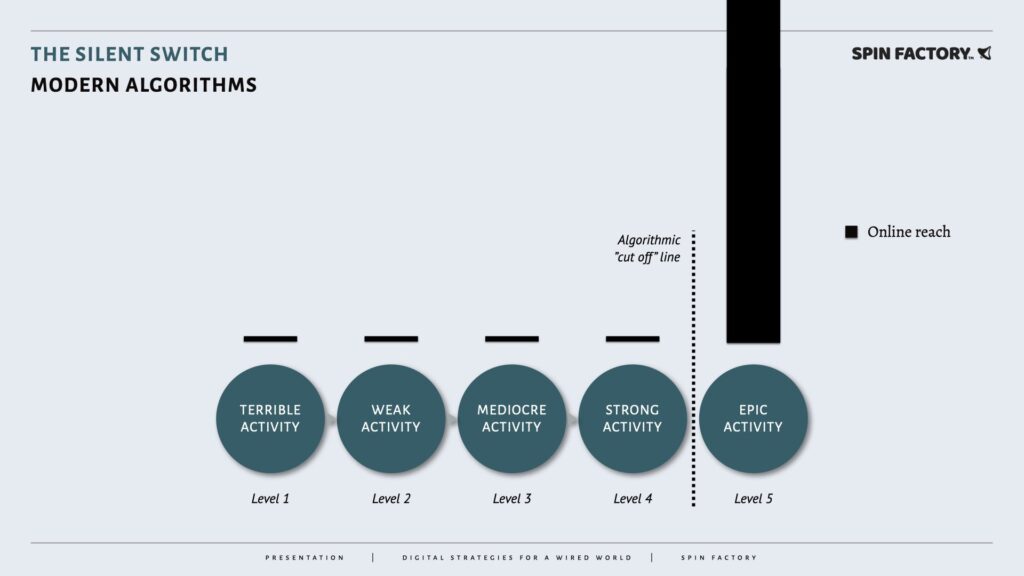




Social Media Mechanics